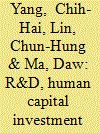| Srl | Item |
| 1 |
ID:
107631


|
|
|
|
|
| Publication |
2011.
|
| Summary/Abstract |
Biomass co-firing systems in power plants generate electric power by the simultaneous combustion of biomass and fossil fuels. The co-firing process reduces investment costs by converting biomass energy into electricity in existing conventional power plants. Biomass co-firing significantly reduces carbon dioxide and sulfur dioxide emissions in power generation. To meet the increase in biomass demand, this paper has considered systematic energy crop production, which is expected to increase in the near future. Our aim is to analyze biomass co-firing systems in the Taiwanese electricity market. In this paper, we study two emerging biomass feedstocks: switchgrass and Miscanthus. We focus on the impact of energy crop co-firing on carbon dioxide and sulfur dioxide emissions for electricity generation. A Nash-Cournot competition model, which simulates potential biomass co-firing scenarios, is formulated for power markets. A case study conducted in the Taiwanese electricity market showed that biomass co-firing lowers total electricity demand and sale. Miscanthus is more economical than switchgrass in terms of the production cost and the land required to generate biopower for the same levels of biomass co-firing.
|
|
|
|
|
|
|
|
|
|
|
|
|
|
|
|
| 2 |
ID:
099163


|
|
|
|
|
| Publication |
2010.
|
| Summary/Abstract |
Using firm-level panel data covering 2005-2007, the present paper examines the effects of R&D and human capital investment on productivity in China's electronics industry. It is found that both R&D and on-the-job training positively contribute to total factor productivity (TFP). Firms' investment in employees' health insurance and pensions, which are components of workers' compensation, generate a productivity-enhancing effect, supporting the efficiency wage hypothesis. The estimated impact of R&D on productivity varies among different forms of ownership, and foreign-owned enterprises experience higher R&D efficiency than state or private enterprises. After controlling for potential endogenous causality between TFP and R&D, the above findings remain unchanged. We also find that on-the-job training can improve the quality of human capital and is helpful in promoting productivity. Therefore, establishing indigenous technological capability through various technological sources is quite important, and the government should devote further effort to investing in human capital.
|
|
|
|
|
|
|
|
|
|
|
|
|
|
|
|